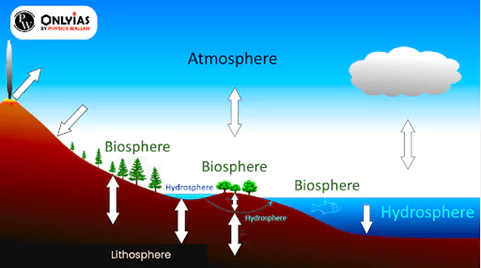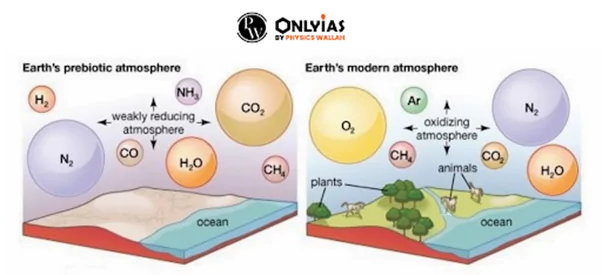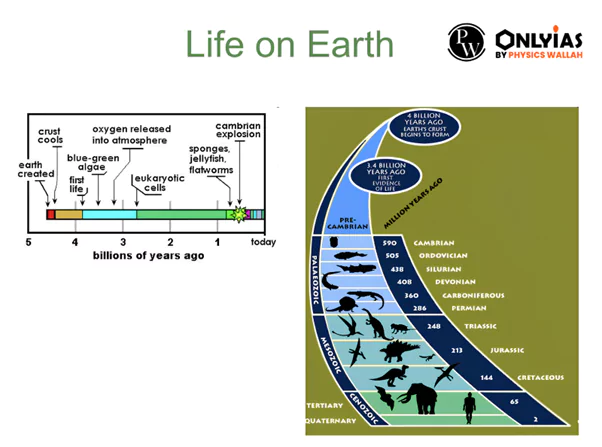Introduction – A Billion-Year Journey: Unfolding the Structure of Earth
Earth’s story is like a grand adventure that spans billions of years. It all began with a fiery birth about 4.6 billion years ago, as a swirling cloud of gas and dust formed our planet. Over years, powerful forces shaped the Earth, from volcanic eruptions to shifting continents.
Life emerged around 3.8 billion years ago, evolving from simple microbes into the diverse array of plants and animals we see today. As time marched on, Structure of earth changed, giving rise to lush forests, vast oceans, and towering mountains. Understanding this epic journey helps us appreciate the world we call home.
Component of Structure of Earth: The Birth of Earth’s Crust and Seas
- Earth formed about 4.5 billion years ago from a cloud of gas and dust in space.
- Gravitational forces caused the material to come together and create our planet.
- Early Earth: In its early history, Earth was extremely hot and had a molten surface.
- Over time, it cooled down, and its surface solidified, forming the Earth’s crust.
- Molten Beginnings: Over a long period of time, dust and gas gradually condensed to form solid rock.
- Such condensation and shrinking made the earth heat up so much that the rock melted into a gluey liquid.
- After millions of years, the outer surface of the earth or the earth’s crust cooled and formed hard rock again, just as melted chocolate or wax solidifies upon cooling.
- The interior of the earth is still very hot.
- Birth of Earth’s Crust and Land : Earth’s crust emerged from the cooling and solidification of molten material and hot gases.
- Seas and Water Formation: As the Earth cooled further, water vapour in the atmosphere condensed into liquid, filling depressions and forming seas.
The Evolution of Earth: From Barren to Life-Sustaining
- Earth’s initial state was quite harsh—barren, rocky, and scorching hot, with a thin atmosphere primarily composed of hydrogen and helium. I
- Changing Conditions: Over billions of years, significant events and processes shaped Earth’s transformation from a hot, rocky world into a beautiful planet with abundant water and a hospitable atmosphere that supports life.

- Formation of Earth’s Layers: Structure of Earth consists of distinct layers, each with unique materials and characteristics.
- From the outermost layer, the atmosphere, to the Earth’s core, there’s a gradient in density and composition.
- The Earth’s Layered Structure: The atmosphere is the outermost layer and has the lowest density among Earth’s layers.
- It’s composed of gasses and surrounds the planet, providing the air we breathe.
- Earth’s Interior Zones: Beneath the atmosphere, Earth’s interior is divided into various zones, each housing materials with different properties.
- These zones include the crust, mantle, outer core, and inner core, each contributing to Earth’s dynamic processes.
The Dynamic Evolution of Earth’s Lithosphere: A Journey Through Time
- The lithosphere is a critical component of Earth’s structure, encompassing the outermost layer of our planet.
- This layer is responsible for various geological processes and features, including the formation of continents, ocean basins, and the Earth’s diverse landscape.
- Primordial State: The Earth formed about 4.6 billion years ago from a swirling cloud of gas and dust in space.
- Initially, it was in a molten and volatile state due to the intense heat generated during the accretion process.
- Differentiation: As the Earth’s mass increased, gravitational forces caused heavier materials, like iron and nickel, to sink towards the center, forming the Earth’s core.
- This process is known as differentiation.
- Lighter materials, such as silicates and other elements, moved toward the surface.
- Crust Formation: Over time, as the Earth continued to cool, the outermost layer solidified to form the crust.
- The crust is composed primarily of silicate rocks and minerals.
- There are two main types of crust: continental crust, which is thicker and less dense, and oceanic crust, which is thinner and denser.
- Heat Sources: While the initial heat came from the accretion process, the Earth also contains radioactive isotopes like uranium, thorium, and potassium, which produce heat as they decay.
- This ongoing heat generation contributes to the Earth’s internal temperature.
- Moon Formation: The Moon’s formation, resulted from a giant impact between a Mars-sized body and the early Earth.
- This impact released an immense amount of energy, temporarily heating the Earth’s surface and potentially contributing to further differentiation.
- Layered Structure : Differentiation process led to the formation of distinct layers: crust, mantle, outer core, and inner core.
- Density increases from the crust to the core.
Evolution of Earth’s Atmosphere and Hydrosphere
- The Earth’s atmosphere and hydrosphere have undergone a complex and fascinating evolution over billions of years.
- This evolution is marked by several stages that shaped the composition and structure of our planet’s atmosphere and the formation of its oceans.

| Stages | Details |
| Stage 1: Loss of Primordial Atmosphere |
|
| Stage 2: Contribution of Earth’s Hot Interior |
|
| Stage 3: Modification by the Living World |
|
Oxygenation of the Atmosphere
- Around 2,000 million years ago, oxygen began to flood the atmosphere as a result of the oxygen-rich oceans.
- This increase in atmospheric oxygen had significant consequences for the evolution of life on Earth, as it paved the way for the development of aerobic organisms that rely on oxygen for respiration.
- This also led to the formation of an ozone layer in the stratosphere, which provided protection against harmful ultraviolet (UV) radiation from the Sun.
Formation of Oceans
- As the Earth cooled, the water vapor in the atmosphere began to condense and fall as rain.
- Rainwater collected in depressions on the Earth’s surface, eventually giving rise to the formation of the planet’s oceans.
- It is estimated that the Earth’s oceans formed within 500 million years after the planet’s formation, making them approximately 4,000 million years old.
The Epic Journey of Life: Emergence and Evolution of Earth
- Evolution of Earth: It is a remarkable journey that spans billions of years.
- Charles Darwin’s concept of species modification through natural selection provides the framework for understanding how life diversified, but it doesn’t address the initial emergence of life.
- Inhospitable Earth
- The primitive atmosphere was composed mainly of methane, ammonia, carbon dioxide, and hydrogen.
- Water vapour filled the atmosphere, but there was no free oxygen.
- This created a reducing atmosphere that was unsuitable for life.
- Emergence of Life
- As the Earth cooled, water vapour in the atmosphere condensed, leading to the formation of liquid water.
- Rainfalls gave rise to water bodies on the planet, providing a crucial environment for the emergence of life.
- The molecules of life, such as amino acids and nucleotides, were formed in these water environments through various chemical processes.
- The Earliest Life: Bacteria
- From the complex chemistry of these early environments, the first living organisms, bacteria, emerged.

-
- Fossils of these bacteria, the earliest known life forms, have been found in rocks dating back 3 to 5 billion years.
- Evolution of Photosynthesis
- Over nearly two billion years, various types of bacteria thrived on Earth.
- They evolved a green pigment known as chlorophyll.
- These chlorophyll-containing bacteria could carry out photosynthesis, converting carbon dioxide and water into oxygen and organic compounds.
- Oxygen began to accumulate in the atmosphere as a result of their photosynthetic activity.
- Transformation of the Atmosphere
- The accumulation of oxygen marked a transformation from a reducing to an oxidizing atmosphere.
- At one point, the oxygen content in the atmosphere reached around 21%.
- The Diversification of Life
- With oxygen-enriched conditions, the process of biological evolution could flourish.
- Life began to diversify, leading to the invasion of land by living organisms.
- Kingdoms of Life
- As time passed, the simple bacteria gave rise to more complex life forms.
- Protists, multicellular organisms, fungi, plants, and animals emerged in the sequence of biological evolution.
- Today, the diversity of life on Earth is classified into five kingdoms: Monera (bacteria), Protista (protists), Fungi, Plantae (plants), and Animalia (animals).






























